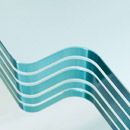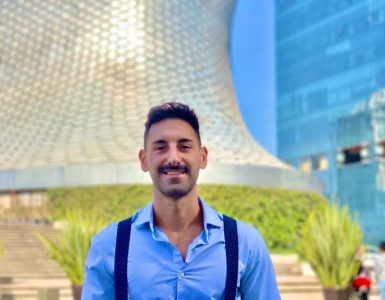In caminahora we are happy to share with you our first article in english. Nowadays we all need english to interact with others once we leave our beloved country or even before, when we are planning to do so.
In this interview we share some steps along the way with Stefan Marinitsch, who works as Head of Research at Seele Sedak, a global leader in the facade engineering sector (see website http://www.sedak.com/research-development.html)
caminahora (c)-How would you explain the broader significance of your research to an engineering student?
Stefan Marinitsch (SM)-As schedules get tighter and tighter there is only little room for innovation in a standard construction process. Most of the times novel solutions are not implemented as there is no code to refer to or due to the lack of information on long term performance. Working in parallel of life project business on innovative solutions enables us to be more reactive to architects demands.
(c)We see that you have done a lot of research and innovation with your company Seele Sedak; Could you tell us any special reference that could help engineering students to get deeper in the knowledge of your research?
(SM) One of our core competences is the lamination bending of glass laminates, Allowing curved geometries in sizes unseen before.
Find some related projects: http://www.sedak.com/laminating.html
(c)In our country, Spain, R&D investments pare exponentially, Would you advice a student who wants to be a researcher to try it even if now is more difficult in our country? Why?
(SM)-I think this is one of the most beautiful side effects of being an engineer. To be a good one we have to find sound solutions to problems. In a way that is what we do.
(c)-What field of civil engineering do you expect to be more dynamic in research during the next ten years? Is already relevant this field?
(SM)-Not surprising green technologies, materials and I hope the possibility of re-using and recycling of components should have a place at the top of issues.
(c)-When in your life did you decide to be a researcher? Did you have any experience which oriented you to make that decision?
(SM)-Be interested in what you do, in what happens around you. Learn from and contribute to your professional environment.
(c)-How is the typical timetable of your job as a researcher. Could you please describe it for the students?
(SM)-In general there are different types of problems. Short term, mid term and long term research. Short term usually requires mocked up testing regimes and quick decision making to overcome pressing problems. Most of the times these issues are project related, say 1 to 4 weeks. Mid term would be a schedule of up to 1 year, most of the time extending existing research. Long term prospects would be 1 to 2 years, working on new ideas. Sometimes without knowing where the journey goes to.
(c)-Do you consider your job as creative?
(SM)-Yes
(c)-In your opinion, what are the most important skills an excellent researcher should have?
(SM)- Know your stuff. Utilize skilled people in the team wherever possible. Be structured.
caminahora – Thank you Stefan for sharing!














Escribe un comentario